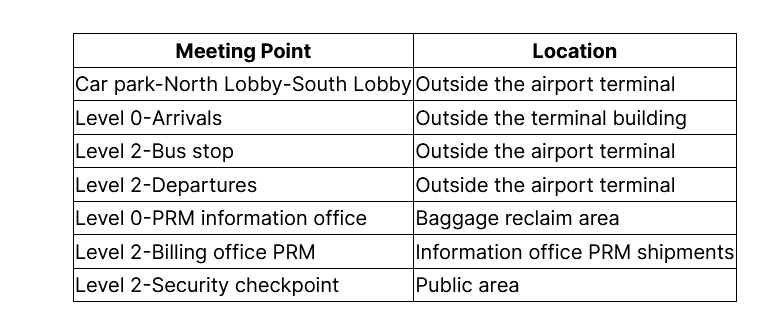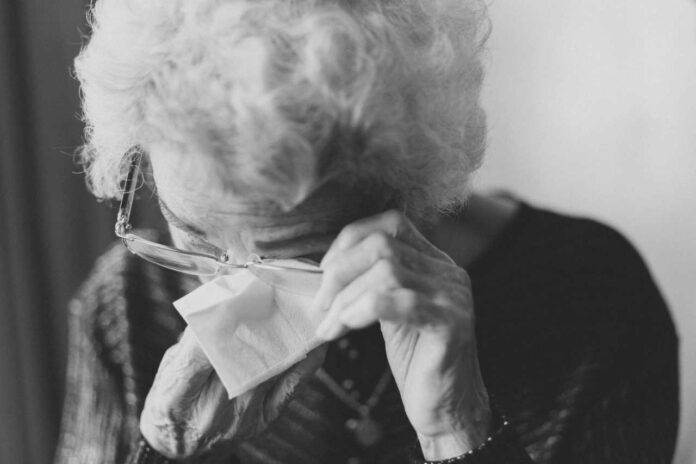Disability Services at Alicante Airport: A Comprehensive Guide
Those with disabilities don’t have to worry about travelling to Alicante Airport. There are lots of disability services at Alicante Airport to make travelling easier.
We bring you a comprehensive guide on the disability assistance at Alicante Airport. Whether you have a permanent or temporary mobility limitation or any other disability, this guide will help you navigate Alicante airport with ease and ensure a seamless travel experience.
Read:Things To Do With Children In Benidorm
Alicante Airport Disability Services
Alicante Airport is fully wheelchair accessible and offers a range of services to assist passengers with disabilities. One such service is “Sin Barreras,” which means “barrier-free” in Spanish. This free Alicante assistance service is designed to help passengers with disabilities navigate the airport’s long distances and find their way around the terminal building.
Who Can Get Assistance at Alicante Airport?
If you have a permanent or temporary limitation in mobility or any other disability that would make it difficult for you to navigate the airport and board the plane unaided, you are eligible for the disability assistance service. It’s important to consider that the airport has long corridors, so if you have walking difficulties, it may be easier to arrange an airport transporter or wheelchair through your airline in advance.
Read:Benidorm Theme Parks
Requesting Disability Assistance at Alicante Airport
To ensure a smooth journey, it’s crucial to inform your airline about your disability assistance needs as soon as possible, ideally at the time of booking and at least 48 hours before your scheduled flight. Most airlines provide a section in their online booking process where you can indicate your assistance requirements. Clearly communicate all your needs to ensure that the airport and airline staff are prepared to meet them.
What does “PRM” Stand for?
In aviation jargon, passengers with disabilities are often referred to as PRM, which stands for “passenger with reduced mobility.” This term includes not only individuals with mobility impairments but also disabled passengers whose mobility is not affected. PRM codes are used internationally to provide airport staff and flight attendants with information about the assistance required by each passenger.
Disability Assistance Meeting Points at Alicante Airport
Alicante Airport has several meeting points equipped with intercom systems where passengers can be picked up by the Sin Barreras team. These meeting points are marked with “Sin Barreras” signage and are strategically located throughout the airport. However, it’s important to book the assistance service at least 48 hours in advance to ensure availability. Here are the different meeting points at Alicante Airport:

Assistance Provided by the Airport’s Reduced Mobility Team
The airport’s reduced mobility team is trained to provide assistance tailored to individual needs. Depending on your requirements, the following services can be provided:
- Meeting and accompanying you to and from the meeting point
- Helping with hand luggage
- Assisting with check-in and boarding
- Guiding you through security checkpoints and customs
- Providing equipment, if necessary, for boarding and disembarking
Hidden Disabilities
Alicante Airport recognizes the challenges faced by passengers with hidden disabilities and has introduced an initiative to support them. Hidden disabilities can include conditions such as autism spectrum disorder, anxiety disorders, and learning disabilities. Although these passengers may not require physical assistance, they may need additional support and understanding from airport staff due to the busy airport environment.
To identify passengers with hidden disabilities, the airport operator has introduced an “invisible disabilities badge.” This badge can be obtained prior to travel and informs airport staff that the passenger may require extra support or time. It’s important to note that the badge does not entitle the passenger to the Sin Barreras service, which must be requested separately.
Alicante Airport: The Most Accessible Airport in Europe
Alicante Airport has been recognized as the most accessible airport in Europe by the Airports Council International. This prestigious award is a result of the airport’s commitment to implementing innovative tools and services for travelers with disabilities. Some of these inclusive features include direct communication channels for assistance, designated charging points for power chairs, user-friendly mobile apps for visually impaired passengers, and dedicated PRM lanes for security and passport controls.
Flying with Reduced Mobility
Getting on the Aeroplane
If your plane is not connected by an airbridge and you are unable to climb stairs, Alicante Airport provides a mobile lift for passengers with reduced mobility. This lift allows you to board the aircraft comfortably.
Airplane Seating
Airlines generally assign appropriate seats free of charge to passengers requiring assistance. These seats are strategically located near toilets and next to any accompanying passengers. The selected seats often have armrests that can be lifted to facilitate easy access.
Airplane Toilets
Airplane toilets can be challenging for passengers with disabilities. While cabin crew can assist with pushing an onboard wheelchair, they are not permitted to provide assistance inside the toilet or help lift passengers. The onboard toilet compartment is small, and the wheelchair can only be taken up to the toilet door. However, all onboard toilets are equipped with rails and grab handles to aid passengers.
If you require physical assistance with toileting, it’s recommended to travel with a companion or explore continence solutions in consultation with a healthcare professional.
Traveling Companions
The Sin Barreras team will accompany you all the way onto the aircraft and assist with transferring you into your seat before leaving you in the care of the cabin crew. However, cabin crew members are not authorized to provide physical assistance. Therefore, if you are traveling alone and require assistance with activities such as fastening/unfastening your seat belt, using the oxygen mask, or understanding safety instructions, you must travel with a companion who can assist you.
Wheelchair Users
Transporting Your Wheelchair
Airlines are required to transport mobility equipment, including wheelchairs, free of charge. It’s essential to inform the airline about your wheelchair or scooter, especially if it has batteries. Depending on safety regulations, certain types of mobility equipment may need to be stored in the aircraft’s hold, while manual folding wheelchairs may be allowed in the passenger cabin, subject to space availability.
Moving Around the Airport and Boarding the Aircraft
Depending on the situation, you may be able to use your own wheelchair until the point of entering the aircraft. However, if your wheelchair needs to be placed in the hold, airport support staff will provide a wheelchair for you at the check-in desk. The wheelchair swapping point may vary based on the boarding method and gate facilities at Alicante Airport. When it’s time to board, you will transfer into a narrower onboard chair or boarding chair, designed to fit through the airplane aisles.
Special Service Request (SSR) Codes
Special Service Request (SSR) codes are used internationally by airports and airlines to communicate the type and level of assistance required by passengers. Here are some commonly used SSR codes for passengers with reduced mobility:
- PRM: Passenger with reduced mobility
- WCHC: Passengers requiring complete personal assistance, including help to their seats and a travel companion for flights longer than three hours
- WCHS: Passengers who are self-sufficient on the airplane but require assistance within the terminal
- WCHR: Passengers who can board and move freely on the airplane but require assistance in the terminal
- BLND: Passengers with visual disabilities
- DEAF: Deaf passengers
- DEAF/BLIND: Passengers who are blind and deaf and require an accompanying person for mobility
- DPN: Passengers with intellectual or developmental disabilities
- WCMP: Manual wheelchair transported by the passenger
- WCBDD: Dry Cell Battery Wheelchair transported by the passenger, which may require (dis)assembly
- WCBWW: Wet Cell Battery wheelchair transported by the passenger, which may require (dis)assembly
Further Information
For additional resources and information on air travel for passengers with disabilities, the Queen Elizabeth Foundation, in partnership with the UK Civil Aviation Authority, has produced a video guide. This comprehensive guide covers everything from flight preparation and airport procedures to boarding, in-flight considerations, and disembarking.


